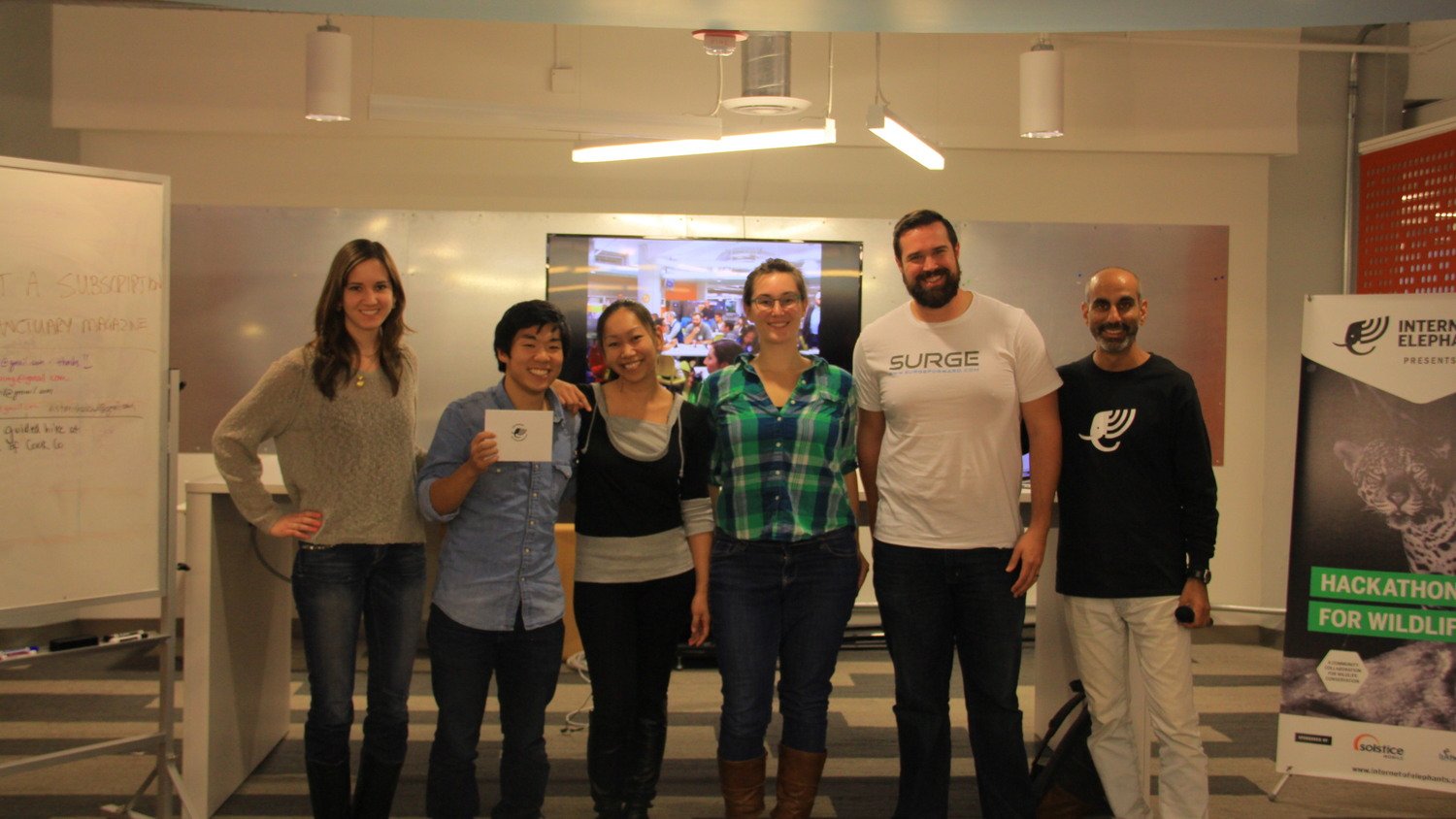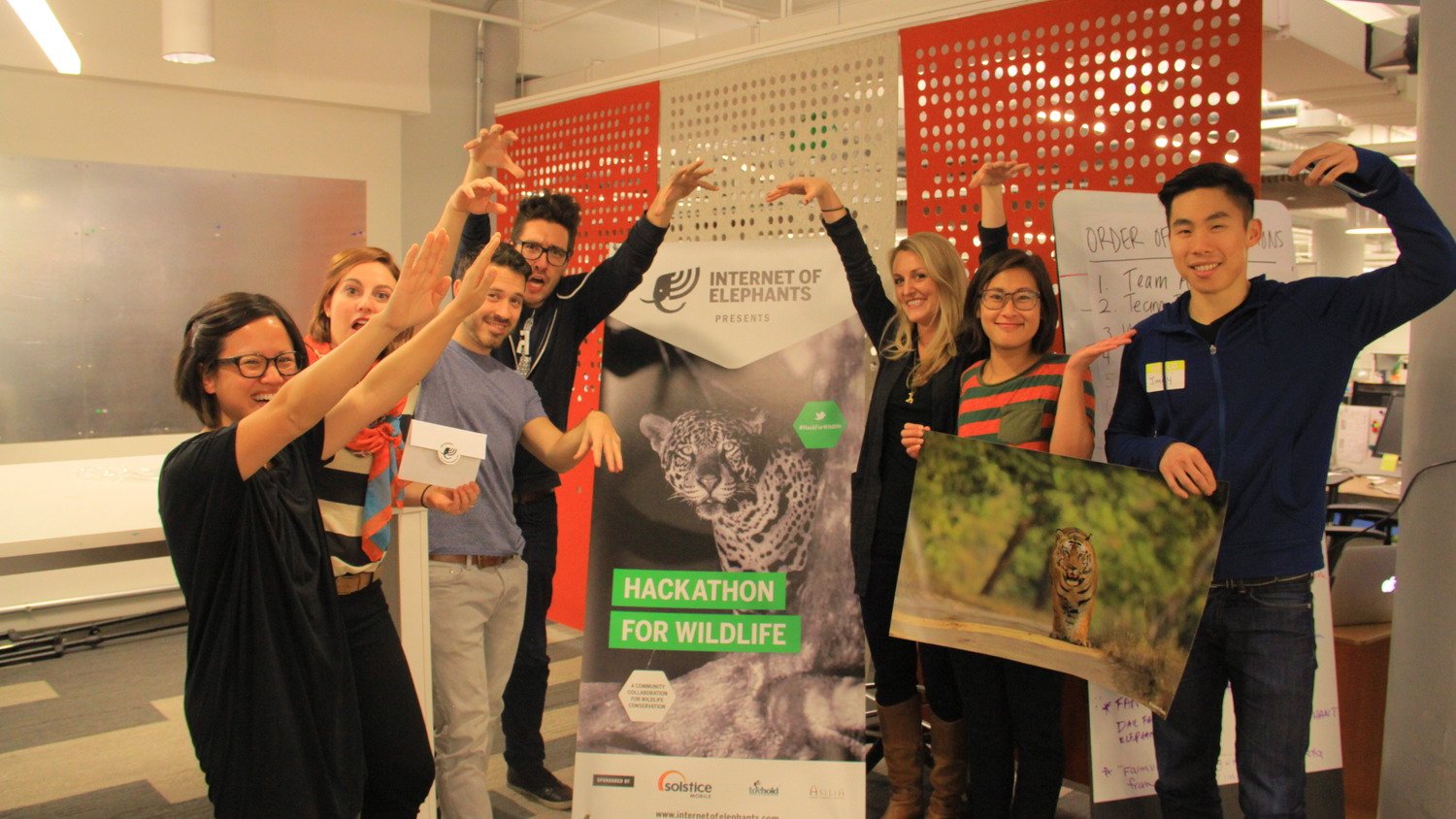Hackathon for wildlife generates 10 innovative concepts for wildlife conservation
After 36 hours of brainstorming, designing and coding, this Sunday night 10 teams presented concepts that harness the power of the latest technology to save our oldest heritage.
From Saturday, November 14 through Sunday, November 15, more than 60 designers, technologists, entrepreneurs, conservationists, and wildlife enthusiasts designed up a storm in the Solstice headquarters in Chicago during the first Hackathon for Wildlife, a community event to utilize technology for wildlife conservation. Participants came in from places as far as Nairobi, Seattle, Boston, and Washington, and committed their weekend to the cause.
Cecil The Lion Called for Action
“This summer, the world expressed outrage over the death of Cecil the Lion,” says Gautam Shah, founder of Internet Of Elephants and mastermind behind the hackathon. “Six hundred lions a year are shot through government-issued licenses because it is one of the only ways conservation can fund itself.”
“Conservation is a complex and very costly activity,” adds Shah. “Given that wildlife populations are on the brink of extinction and conservation organizations struggle to make a dent with tiny budgets, we need to develop sustainable answers that will change the game.” To kickstart a new way of thinking, Shah initiated the hackathon for wildlife.
The Hackathon
Subject matter experts were on site to provide inspirational presentations and brainstorm with the teams. The founder of Savannah Tracking, Henrik Rasmussen, flew in from Kenya to demonstrate the collars he produces to track elephants: giant belts with shockproof sensors the size of a brick. “You can imagine with all the rolling in the dirt, trampling through forests and the occasional bullfight, these devices have to be built like a bunker,” explains Rasmussen.
As ideas started flying, food was passed around, and sofas were set up for catnaps for the die-hard participants who worked through the night. When the dust settled, 10 great concepts emerged.
Winning concepts
Ten teams presented their concepts, and hackathon participants and subject matter experts judged each team. The teams that came out on top were:
Best Overall: Team 24 Animals with an app to show people their commonalities with animals.
Best Overall: Team 24 Animals with an app to show people their commonalities with animals.
Best Use of Technology: Team VultuRe with a plan to revolutionize the way children learn by incorporating virtual reality.
Best Impact to Conservation: Team Awe with their “Habitap” app that allows users to follow animals in real-time.
Best Prototype: Team Finding Tim with an interactive game to give people an opportunity to experience life as an animal.
In the true spirit of a hackathon, participation has its own reward. “I felt invigorated by the energy of the hackathon and am proud of the ideas we came up with in just 36 hours,” says Scott Goodwin of Team Wildlife Tracker. “Now I am thinking about how we can take these concepts to the next level and engage more people in wildlife conservation.”
What’s next
“As a community that came together for just 36 hours, we’ve seen some incredible outcomes,” says Shah. “The results are free for everyone and anyone to take further.”
“The hackathon really shows that people love to be involved in creating solutions and what can be achieved when you put multi-disciplinary talent together in a room,” says Solstice Founder and CEO, J Schwan. “I am excited by the outcomes of the hackathon and look forward to seeing how the projects come to life to create positive change for wildlife.”



